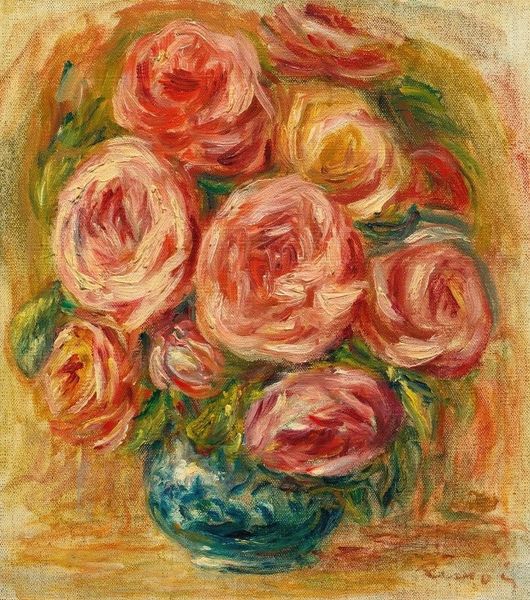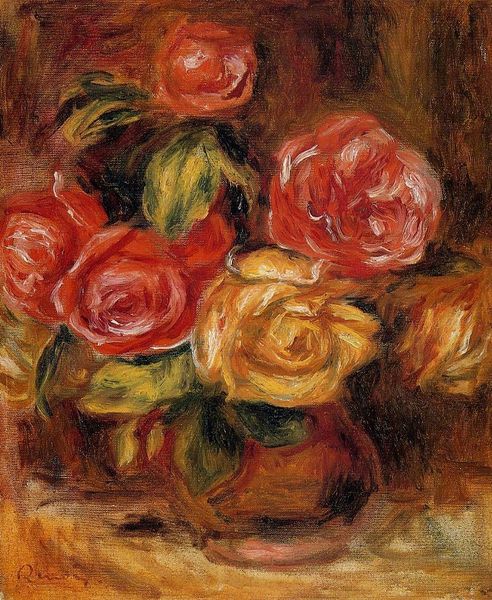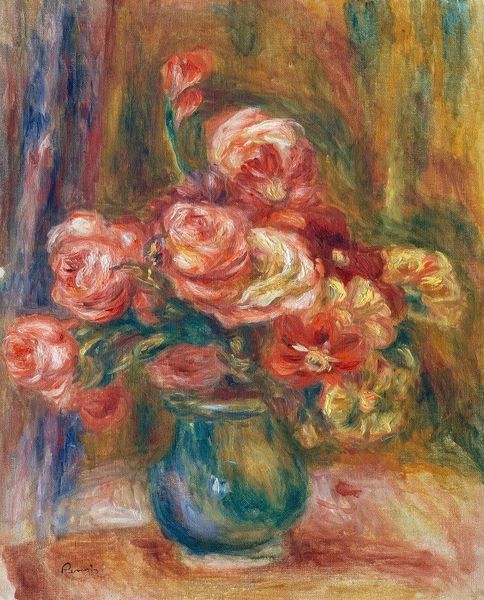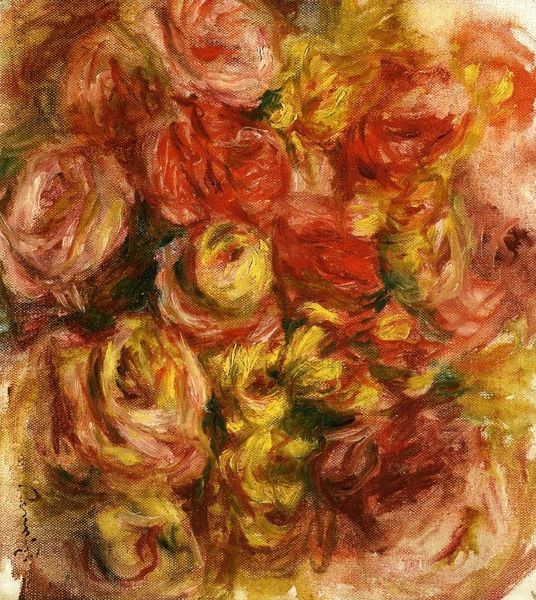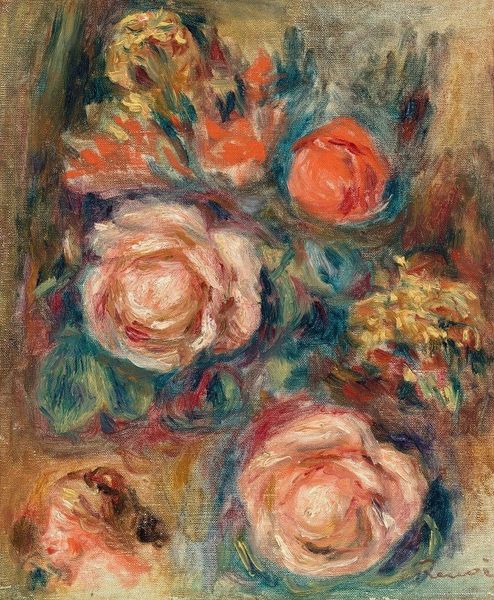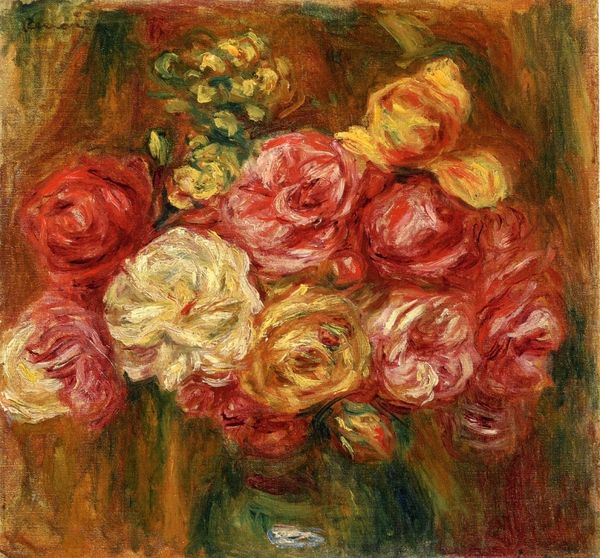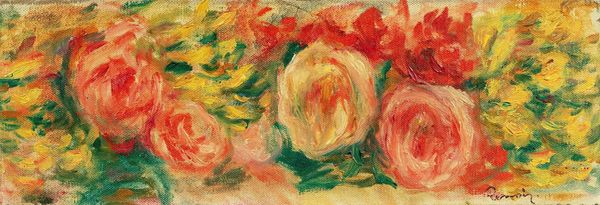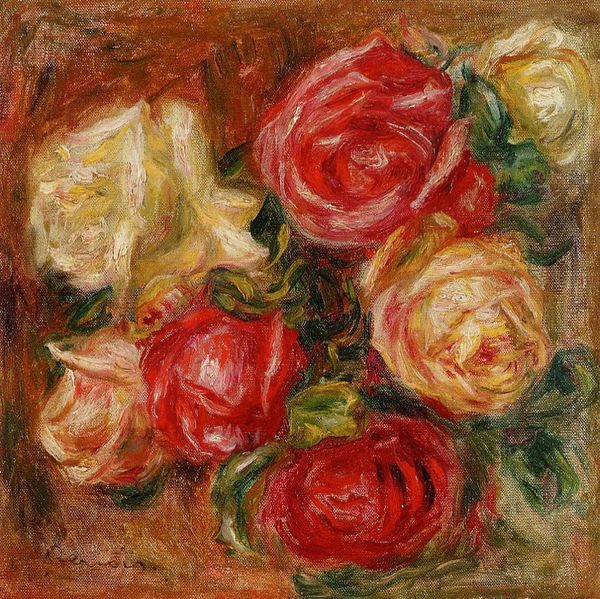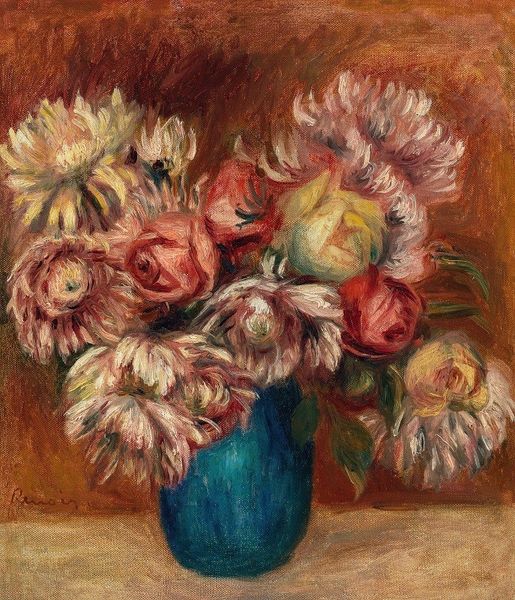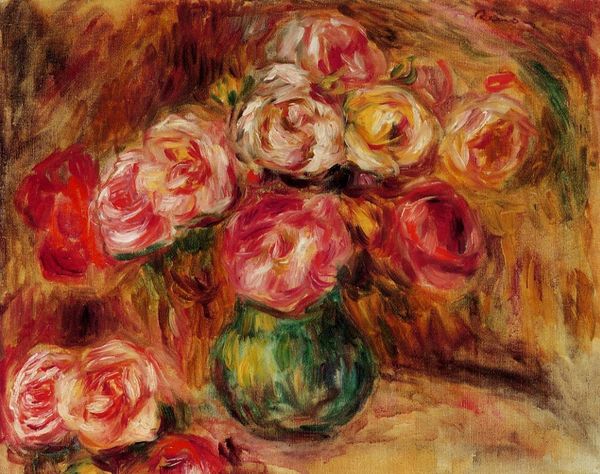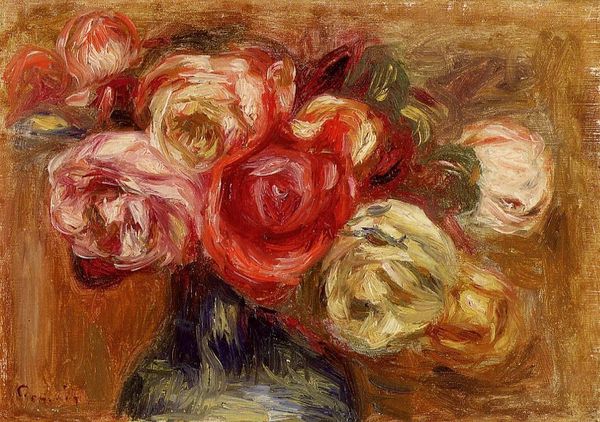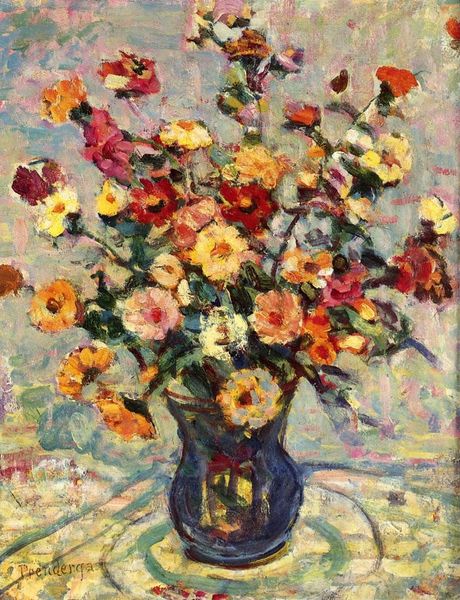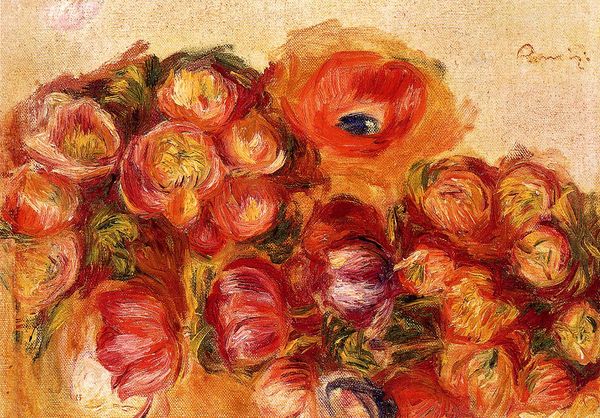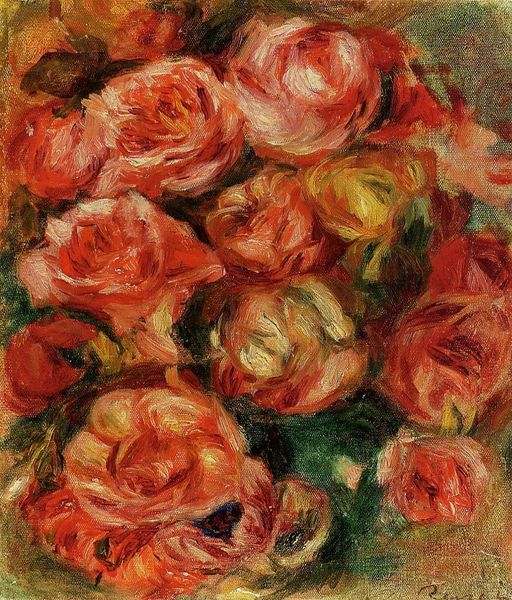
Copyright: Public Domain: Artvee
Curator: This is "Bouquet de narcisses et de roses", painted by Pierre-Auguste Renoir in 1914. The canvas bursts with colour, predominantly yellows, reds, and greens applied in that distinct, broken brushstroke synonymous with Impressionism. Editor: It’s remarkably vibrant! There's a certain tension here. A push and pull between order and chaos. Do you sense the same? Curator: Precisely. These late works by Renoir show an interesting synthesis. The cultivation of flowers as a subject becomes an engagement with consumerism and pleasure. And with the thick impasto application of the paint—do you consider this high art, craft or both? Editor: I'd argue his positioning in the salons solidified the perception. What do we know of its context? The First World War had just begun, a striking contrast to this exuberance, wouldn't you agree? Curator: Good point. Knowing Renoir was living in the south of France at the time, it’s intriguing how insulated his art production seemed. This art becomes symbolic of an unattainable beauty and ease for many experiencing upheaval and immense challenges at the time. Editor: I see that. The romantic lens makes the viewer both long for the work, while still maintaining distance as they see this piece in a museum. Almost like observing wealth and class. Do you believe there’s commentary? Curator: Perhaps the artist unconsciously comments via material production; what these painted objects represented socio-economically in contrast to global and societal challenges of the era—surely is an idea. It raises questions around privilege and escapism within art itself, don't you think? Editor: It does, though the impressionistic and romantic approach often veils critique. Food for thought! I wonder how these colours hold up across time given the mediums. Curator: Absolutely! A lasting impression is more than just pigment. It’s the context it's made, viewed and exists within that solidifies any artwork’s significance. Editor: Agreed! The painting provides a lens to examine societal attitudes toward labor, war and beauty during the early 20th century.
Comments
No comments
Be the first to comment and join the conversation on the ultimate creative platform.
